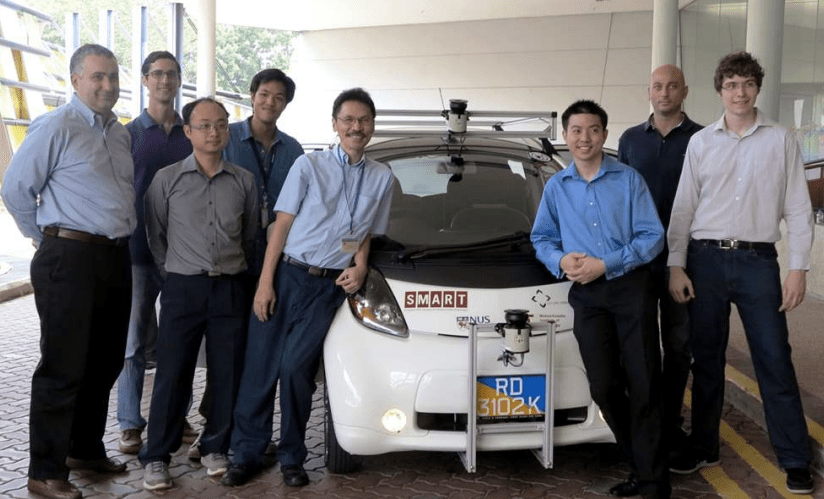Driverless Car "SCOT" Uses Remote Sensing - Developed By Singapore-MIT Alliance
If you thought Google were the only ones doing it, you were wrong. Singapore-MIT Alliance for Research and Technology (Smart) and National University of Singapore have jointly developed "SCOT" - a driverless car that will operates autonomously. The team behind the project started with a Mitsubishi i-MiEV electric car and worked upon it to make it robot-controlled such that it would drive programmed routes. Imagine a say when you return to your car parking area after a tiresome and day and not have
to drive on heavy traffic roads. Just sit in your own car and it will take you home safely.
SCOT stands for Shared Computer Operated Transport. The driverless car can seat four people and has a top speed of 130kmh. It uses laser sensors with a 30m range to detect and avoid obstacles in its path. It also uses remote sensing technology that allows it to function without relying on the Global Positioning System (GPS). The team takes pride in sharing that the car can sense obstacles even in poor lighting and moderate rain. In fact, SMART’s SCOT can drive even in tunnels as it does not rely on the GPS. Researchers have shared that the car features a low-cost remote sensing technology called LIDAR, which costs only a fraction of expensive 3-D laser sensors currently used in robot cars. LIDAR’s technology uses laser’s focused imaging and radar’s distance calculation capabilities.

Do take a look at the following video from Straits Times to see the car in action
What do you think about the driverless car SCOT? Share your thoughts with us in comments below.
Source: #-Link-Snipped-#
to drive on heavy traffic roads. Just sit in your own car and it will take you home safely.
SCOT stands for Shared Computer Operated Transport. The driverless car can seat four people and has a top speed of 130kmh. It uses laser sensors with a 30m range to detect and avoid obstacles in its path. It also uses remote sensing technology that allows it to function without relying on the Global Positioning System (GPS). The team takes pride in sharing that the car can sense obstacles even in poor lighting and moderate rain. In fact, SMART’s SCOT can drive even in tunnels as it does not rely on the GPS. Researchers have shared that the car features a low-cost remote sensing technology called LIDAR, which costs only a fraction of expensive 3-D laser sensors currently used in robot cars. LIDAR’s technology uses laser’s focused imaging and radar’s distance calculation capabilities.

The team led by Profs Emilio Frazzoli and Marcelo Ang at the Singapore Science Centre.
The car can right now function as an on-demand mobility solution for places with huge areas such as resorts. Research on SCOT has been going for almost three years. It took them almost $30,000 to retrofit the car. They could have spent a lot more money and used a lot of sensors, but they have been instead working on creating something that is cheaper and affordable, and still does the job. Previously, we have seen #-Link-Snipped-#, #-Link-Snipped-# and <a href="https://www.crazyengineers.com/threads/googles-self-driving-car-travels-300-000-miles-without-any-accident.66338">Google's Self-Driving Car Travels 300,000 Miles Without Any Accident</a> working on Self-driving cars.
Do take a look at the following video from Straits Times to see the car in action
Source: #-Link-Snipped-#
0
